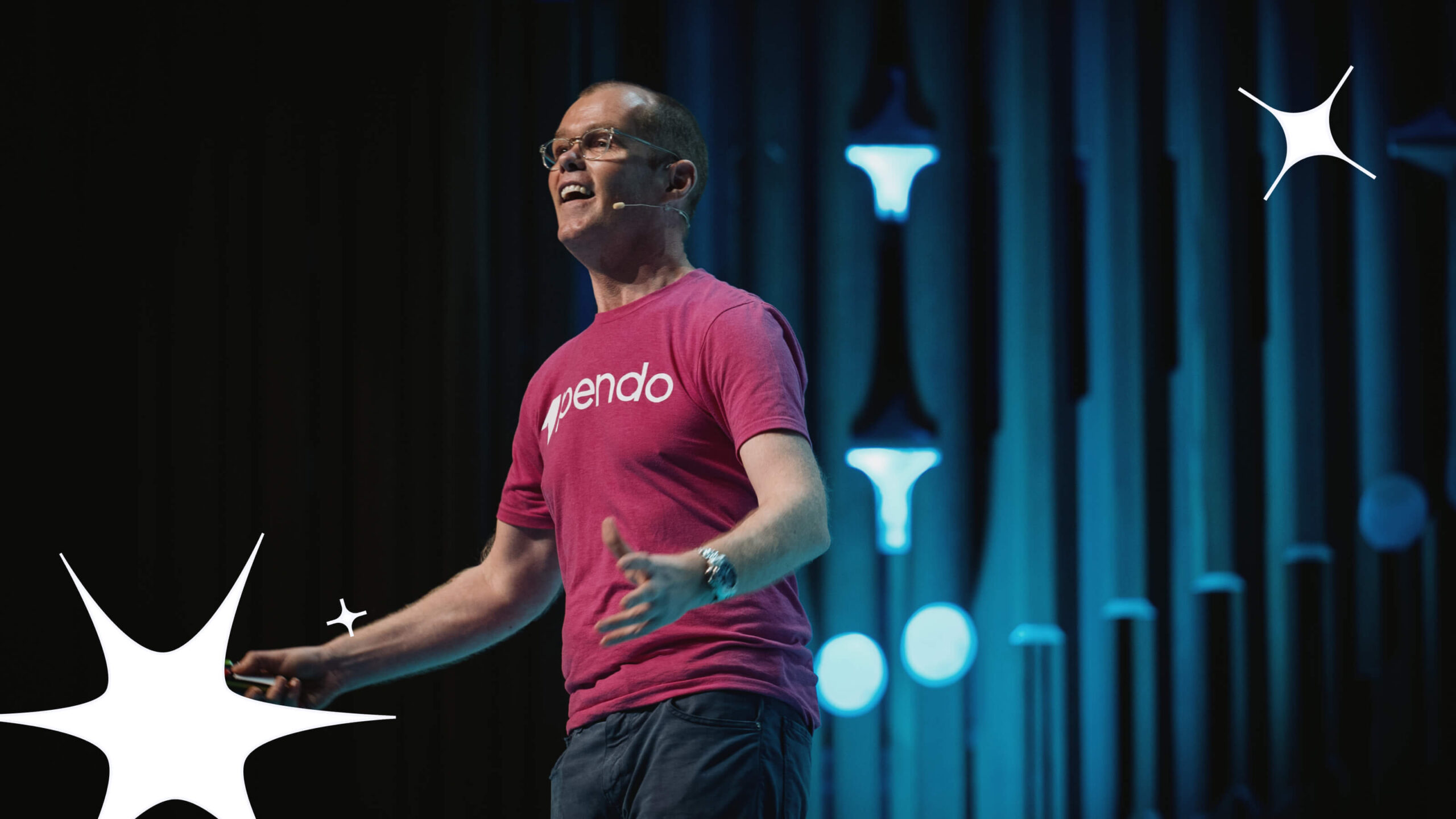While product ops exists to support (and free up the time of) their product manager counterparts, PMs are often used to taking on all of the things that fall under the product umbrella, which can make it difficult to draw lines and separate responsibilities for the two functions. Luckily, there are experts who can show us the way.
At this year’s Mind the Product Conference, Christine Itwaru, Pendo’s senior director of product operations, and Stephanie Tanzar, Pendo’s director of product management, shared insights into what a successful product ops/PM relationship looks like. They started by noting that historically, PMs focused on things like stakeholder communication, enablement, voice of the customer, and sales trends, but now, their time needs to be spent elsewhere.
Product managers must spend the bulk of—if not all of—their time understanding customer pain points and relaying context to the engineering team so that they can do their best work. When PMs are truly focused on these two areas, it leaves little room for things like release management, documentation, and internal communication and alignment.
So, product ops keeps a pulse on all of these (highly important) peripheral things while PMs focus on spending quality time with customers and engineers. Although there’s no one-size-fits-all model for product ops, companies should dedicate resources to make it someone’s (or ideally, a team’s) full time job.
Wondering what this separation of (super)powers looks like? Here’s a breakdown of how product managers and product ops differ in three key areas:
1. Solving internal vs. external pain points
One key difference between product managers and product ops is the pain points they work to solve. For PMs, it’s about solving external customer pain through product outcomes—what new features, functionality, or products do we need to build to meet users’ needs?
At the same time that all of this important development work is happening, product ops teams are working to solve pain points related to product delivery for their internal customers, aka their stakeholders across the organization. This means managing all aspects of beta and general releases, writing and maintaining documentation for each release, and training their colleagues in sales, customer success, and marketing on the product’s latest functionality.
2. Partnering for varying purposes
Both the product manager and product ops roles are extremely collaborative in nature. Where PMs partner with customers and engineers to ideate, experiment, and move quickly to bring these ideas to life, product ops aligns with internal partners to build trust and empower teams across the organization with timely information and resources. These two types of partnerships go hand-in-hand; a PM partners to build the best experiences for users, and product ops partners to make sure the rest of the organization knows everything they need to know about the PMs’ efforts.
3. Different definitions of value
When it comes to delivering value, the difference for these two functions lies in tangibility. Product managers build tangible products and features with the goal of providing value to their user base. Product ops then takes those and builds intangible value around what the PMs created. This includes things like training resources, launch communications, feedback collection and management, and more.
Bonus: Qualities to look for in a product ops hire
If you’re just getting started with product ops (or looking to scale your existing team), there are certain characteristics to look for in a potential product ops hire. Here are the skills Stephanie and Christine recommended prioritizing:
-
- Empathy
- Focused on data
- Embrace rigor
- Flexible
- Strong communicator
- Trustworthy
- Customer centric
- Strong collaborator



